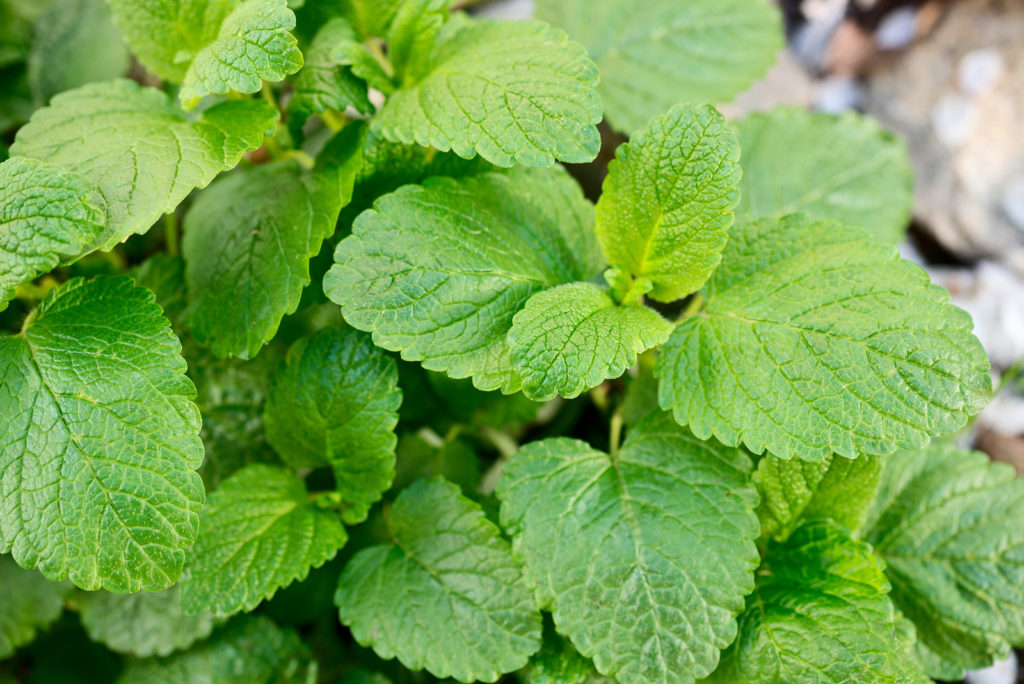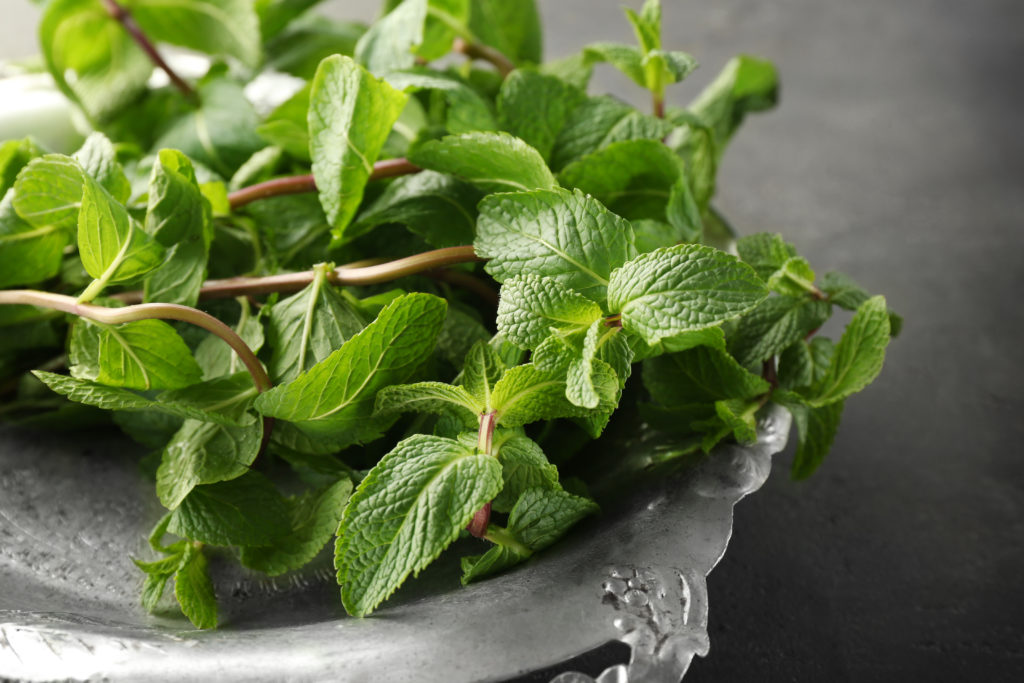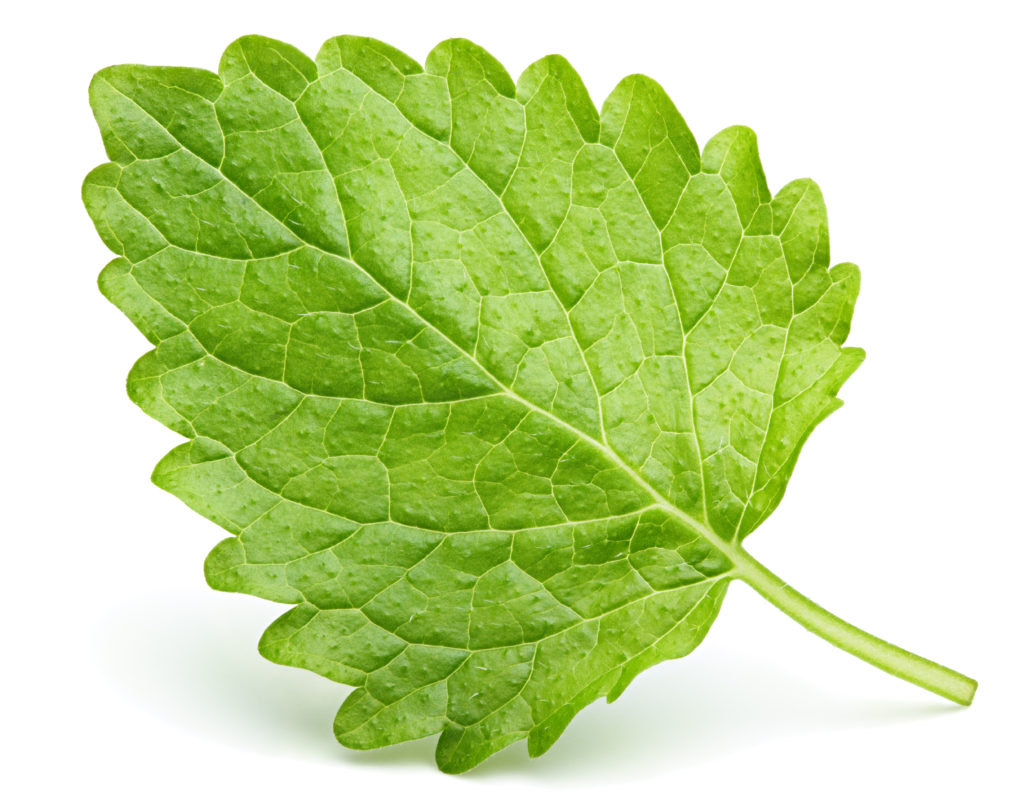You can learn how to grow lemon balm in a few minutes. Lemon balm is a perennial herb that grows best in cool weather. It has lemon-scented, mint-like leaves that are often used to make refreshing, lemony hot and cold drinks. The leaves also add a tart-lemony flavor to green and fruit salads as well as meats and poultry.
Here is your complete guide to growing lemon balm.
Where to plant lemon balm
- Best location: Plant lemon balm in full sun; it will tolerate shade.
- Soil preparation: Grow lemon balm in well-drained, sandy loam. However, lemon balm will grow in almost any soil but not very wet soil. It prefers a soil pH of 6.7 to 7.3.
Related articles:

When to plant lemon balm
- Seed starting indoors: Sow seeds indoors for about 2 months before transplanting lemon balm into the garden after the last spring frost. Seeds require light to germinate so do not cover them or cover them only lightly with fine soil. Germination will come in about 14 days.
- Transplanting to the garden: Set transplants in the garden after the last spring frost.
- Outdoor planting time: Sow lemon balm in spring at about the average date of the last frost. Seeds can be slow to germinate. Also, sow seed in late summer or fall. Root divisions can be planted at any time during the growing season but will become established quicker in cool weather. Cuttings from new growth can be started in moist sand.
How to plant lemon balm
- Planting depth: Sow lemon balm seed ¼ inch deep; very light cover is all lemon balm needs for germination. Keep the seedbed moist until the seed germinates.
- Spacing: Thin successful seedlings to 8 inches apart and later thin plants to 18 inches apart. Space rows 18 to 24 inches apart.
- How much to plant: Grow 4 lemon balm plants for cooking; grow 6 to 12 plants for tea and preserving.
Lemon balm companion plants
- Companion planting: Grow lemon balm with broccoli, cauliflower, and other cabbage family plants. The fragrance of lemon balm helps deter insects that attack cabbage family crops and also masks the smell of cabbage. Plant lemon balm with hollyhocks, angelica, and nasturtiums. Lemon balm attracts honeybees; plant it near fruit trees to aid pollination.
Watering and feeding lemon balm
- Watering: Lemon balm requires regular, even watering. It grows best in slightly moist soil. Once established lemon balm tolerates drought.
- Feeding: Lemon balm does not require extra feeding; side-dress plants with aged compost during the growing season.

Lemon balm care and maintenance
- Care: Lemon balm spreads by underground roots. To keep lemon balm from becoming invasive, set it in the garden in a bottomless container that will keep the roots in place. Remove unwanted plants before they become established.
- Cut plants back by half after flowering to encourage a second crop of leaves and a compact form.
- Deadhead plants to prevent self-sowing.
Container growing lemon balm
- Container growing: Lemon balm can be container grown as an annual. Choose a container 6 to 8 inches deep and wide. Over-winter lemon balm in a protected area such as an unheated garage or patio.
- Winter growing: Cut back lemon balm in fall leaving just 2 inches of stem. The plant may freeze back to the ground in winter but will re-grow from underground roots and renew itself in spring.
Lemon balm pests and diseases
- Pests: Lemon balm has no serious pest problems.
- Diseases: Lemon balm is susceptible to verticillium wilt, mint rust, and powdery mildew. To prevent these fungal diseases, keep plants sufficiently spaced to allow for good air circulation. Spray plants with compost tea during the season; compost tea is a natural fungicide.
How to harvest lemon balm
- When to harvest: Pinch off and use leaves and sprigs as needed during the growing season. Older, lower leaves have the strongest aroma. Leaves for drying are best harvested before the plant flowers in summer, usually about the time lower leaves begin to yellow. At midseason or in autumn, cut back the plant back by half; it will regrow new leaves in 4 weeks or so.
- How to harvest: Snip leaves and sprigs with a garden pruner. The leaves bruise easily so handle them with care.
Lemon balm in the kitchen
- Flavor and aroma: Lemon balm has a strong scent of lemon with a touch of mint.
- Leaves: Use freshly chopped leaves sprinkled lightly on cooked vegetables, green salads, chicken salads, fruit salads for a lemony flavor. Serve with corn, broccoli, asparagus, lamb, shellfish, olives, and beans. Add chopped leaves to salad dressing, dips, and soft cheeses for spreads. Sprinkle chopped leaves over vanilla ice cream.
- Cooking: Use lemon balm leaves fresh in cooking. Add lemon balm at the end of cooking to impart the best flavor.
- Teas: Fresh or dry leaves make a refreshing, mildly lemony tea. Also, add leaves to lemonade. Infusion from fresh or dried leaves has a cool, citrus taste that calms upset stomachs.
- Culinary complements: Combine lemon balm with dill, parsley, or lovage to add a subtle citrus flavor to sauces

Preserving and storing lemon balm
- Drying: Leaves can be stripped from stems and dried on trays in a warm shady place. Harvest nearly mature leaves for drying. Leaves must be dried quickly within two days of harvest or they will turn black. Leaves must be dried at 90°F to retain their green color. Dried leaves will not be as flavorful as fresh leaves.
- Freezing: Fresh leaves can be frozen.
- Storing: Dried leaves can be stored in an airtight container for about 6 months.
Lemon balm propagation
- Seed: Lemon balm can be grown from a seed that has been stratified (chilled or frozen) for at least 7 days; once stratified germination will happen in about 14 days. Lemon balm will self-sow in place. You can also sow seeds in place in the fall for spring plants.
- Cuttings: Root lemon balm cuttings in late spring or early summer; dip cut ends in a rooting hormone and plant stems in organic potting soil.
- Division: Root divisions can be planted at any time during the growing season.
- Layering: Lemon balm will root at nodes along stems when covered with soil; layer plants in spring or fall.
Lemon balm varieties to grow
- ‘Aurea’ is a variegated variety.
- ‘All Gold’ has completely golden foliage with pale lavender flowers.
Get to know lemon balm
- Botanical name and family: Melissa officinalis (Lamiaceae—mint family)
- Europe and Asia
- Type of plant: Lemon balm is a herbaceous upright perennial.
- Growing season: Lemon balm grows best in cool weather. In freezing temperatures, it will die back to the ground then regrow from the roots in spring.
- Growing zones: Zones 4 to 9; lemon balm does not like hot, humid climates.
- Hardiness: Lemon balm is cold hardy to -20°F; it only moderately tolerates heat.
- Plant form and size: Lemon balm grows to 12 to 24 inches tall and wide; it grows in clumps of branched stems with loose terminal clusters of small white to creamy yellow flowers at the top. Lemon balm may be mistaken for mint at first glance.
- Flowers: Small white flowers are borne in tight clusters at the axles along the length of the stems.
- Bloom time: Lemon balm blooms throughout the summer and into fall.
- Leaves: Lemon balm has lemon-scented, oval, toothed leaves that are heavily veined or quilted from 2 to 3 inches long arranged opposite one another on four-sided stems. Leave are coarsely toothed with a bristly surface.
Also of interest:
- Anise
- Anise Hyssop
- Arugula
- Basil
- Bay
- Bee Balm
- Borage
- Calendula
- Caraway
- Catnip
- Chamomile
- Chervil
- Chives
- Cilantro-Coriander
- Clary
- Costmary
- Cress
- Dill
- Fennel, Sweet
- Horseradish
- Hyssop
- Lavender
- Lemon Balm
- Lemon Verbena
- Lovage
- Marjoram
- Mint
- Nasturtium
- Oregano
- Parsley
- Perilla
- Rosemary
- Sage
- Salad Burnet
- Savory
- Scented Geranium
- Shiso
- Sorrel
- Stevia
- Sweet Cicely
- Tarragon
- Thyme
Related articles:
Best Herbs for Container Growing
Planning the Home Fruit Garden
Garden Planning Books at Amazon:



